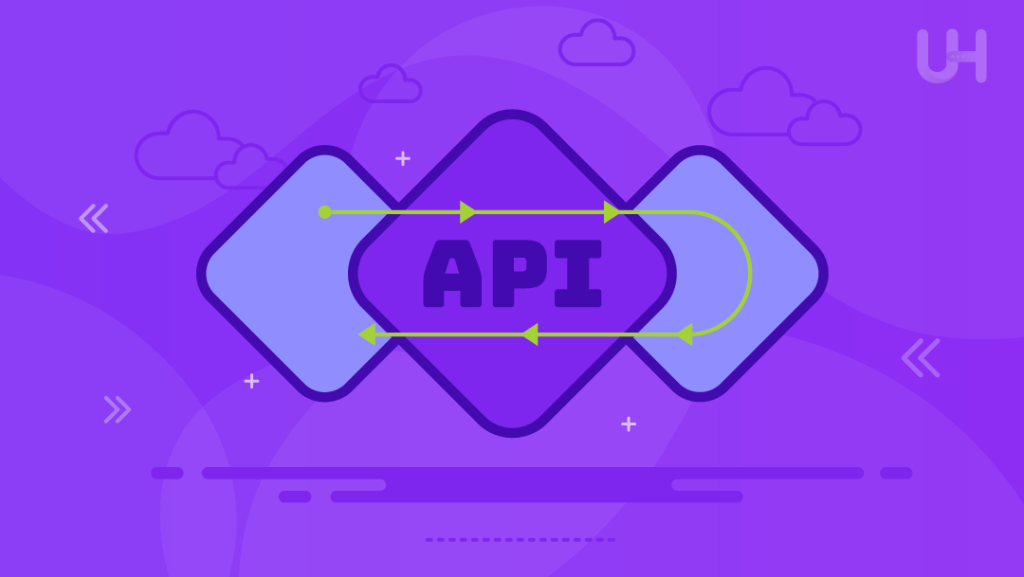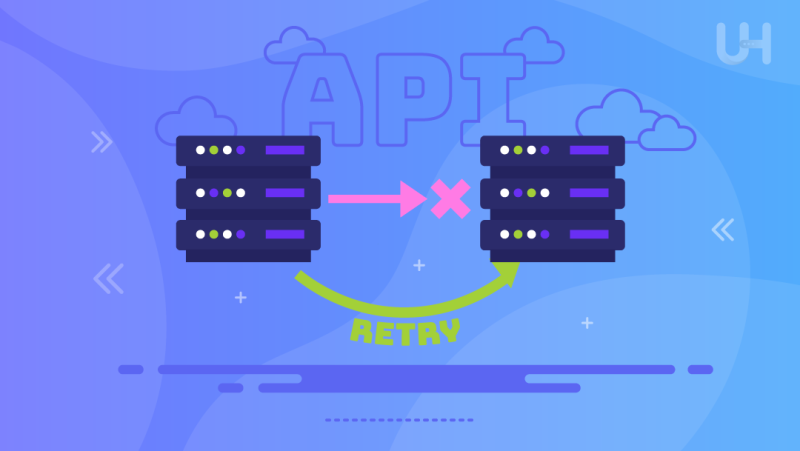The idempotent API is imperative in web development, primarily when dealing with RESTful services. To be more precise, it assures that any repeated request would have identical outcome impacts on the final states as a single request, thus promising predictability, stability, and consistency because of those consistent interactions between a client and a server in web applications.
In this article, we explore the concept of idempotent APIs, their critical role in RESTful services, and how they contribute to enhancing the stability, reliability, and predictability of web applications in various hosting environments.
What is an Idempotent API?
An idempotent API ensures that if the same request is used repeatedly, the server should always be in the same state as it was after the first application. Idempotency in designing a RESTful API is the ability of the result to consistently work despite being used several times. For instance, in network communications, one would repeatedly reissue a request to compensate for failed retries, ensuring that re-transmissions will not create a side effect.
However, idempotent APIs significantly boost data privacy. In another light, idempotent APIs avoid altering the state of data beyond the way it was in the initial action, therefore reducing the risk of unauthorized data manipulation. This could be very important, in particular, in scenarios involving personal data or where actions are auditable so that there is precise traceability.
There is an Application Programming Interface (API) call for updating a user’s email; you could be updating it many times by issuing that PUT request, but the email will only change once, and subsequent tries will not affect the user’s email.
Implementing Idempotent APIs in Modern Infrastructure
Developers can use a couple of strategies to work with the idempotent API:
- Unique Resource Identifiers (URI): Each resource MUST have its own URI, and if accessed/modified multiple times, it should refer to the same resource and act in the same manner.
- Use Tokens in POST Requests: Implement token-based mechanisms for each request made with POST methods so that the request can be identified uniquely. This is how the repeated requests are taken as duplicates, and the server will not process the request to maintain idempotent results.
- Leveraging Docker: Use Docker to ensure the creation of uniform and isolated environments and consistent API behavior for any platform and deployment. Containerization in Docker aids in pursuing consistency and supporting reliable execution of the idempotent APIs.

Why Idempotency Matters in REST APIs
Safety feature is an important role that idempotency serves in distributed systems. It provides some valuable benefits in a system, such as the prevention of double transactions and preventing states that are not consistent due to network failure or interaction retries. This is why idempotency in RESTful APIs is important:
- Reliability: Idempotency enhances an API’s reliability. This is precisely where idempotency brings value: in an environment where the network conditions are not stable, the client can safely retry requests without a chance of creating any side effects. This way, with the unpredictable environments and possibilities of a network failure, the system’s behavior would be predictable and stable.
- Consistency: The idempotent operation keeps the result in the plurality of processes invariant, maintaining the system’s consistency by synchronizing different parts of the process. This is especially important in interactions from multiple components, where it protects from anomalies in the data set and guards uniformity.
- Error Handling: Idempotency allows much easier error handling for clients and servers. The whole problem of handling repeated requests is hence simplified. This, in turn, decreases overall complexity in handling potential errors and, thus, adds to the system’s robustness.
In significant terms, the property of idempotency is an essential realization of reliability, consistency, and error-handling ability by REST APIs in distributed systems.
Optimize Your API Performance!
Are you ready to enhance your API’s efficiency with high-RAM VPS hosting? Explore UltaHost’s solutions for superior reliability and seamless scalability. Don’t wait, elevate your service today!
How Idempotency is Achieved in RESTful APIs
To design an idempotent REST API, developers must carefully choose HTTP methods according to their idempotent characteristics. Here’s a look at common HTTP methods and their idempotency:
- GET: Naturally idempotent. Repeatedly fetching data does not alter the state of the resource.
- POST: It is generally not idempotent. It is used to create new resources, and multiple POST requests typically create multiple resources.
- PUT and DELETE: Both are idempotent. PUT updates a resource completely through a replacement process, and DELETE removes it.
- PATCH: This can be idempotent, but it depends on the implementation. It partially updates a resource, and without careful design, it could lead to non-idempotent operations.
Challenges with Idempotent API
At the same time, idempotency provides an extra guarantee of the interaction’s reliability and predictability; however, it also exposes some issues.
- Complexity in Implementation: The idempotency of complex state changes typically has to be maintained by adequately implementing extra logic and control through operations, which can become quite cumbersome. The operations must then be designed to carefully maintain idempotency without introducing errors.
- Performance Overhead: Introducing idempotent mechanisms, such as checks for duplicates, sustaining unique tokens, or validating time stamps, can pose a performance overhead. Such additional checks and validations slow down the API, especially for cases of high traffic or high frequency of access. Therefore, they slow down the whole system’s performance.
Idempotent API in VPS Hosting
While selecting the best Virtual Private Server (VPS) for web applications, it is essential to exhibit how idempotent API interacts with different services provided in VPS hosting services. We take a look at how idempotency has played a pivotal role in boosting reliability and performance:
Unmanaged VPS Hosting
An unmanaged VPS hosting gives maximum control over the server environment to enable high customization and optimization. While developers control their server environment, deploying idempotent API ensures custom configurations and applications remain stable and are never altered, even with repetitive requests.
Idempotent APIs can indeed simplify error, to some small extent, by reducing the probability of accidentally corrupting data when you depend on most users of unmanaged VPS hosting, where the onus is on installing and maintaining software.
Fastest VPS Hosting
Most important for people seeking the fastest VPS hosting will be the performance of the service and its reliability. It is targeted mainly at those applications that require speedy response times and perform well even under high loads. Idempotent APIs may increase these characteristics if they prohibit the repetition of requests with an extra processing overhead that might otherwise degrade the performance and consistency of states.
Fast VPS hosting will usually need to deal with vast quantities of requests. Typically, the development of idempotent APIs reduces the risks of server overloads. This keeps the system responsive and resourceful even under high traffic or network retries.
Enterprise WordPress Hosting
Enterprise WordPress hosting caters to high-traffic websites and, therefore, requires the environment to be provisioned for the operations of complex configurations. Idempotent API should be well integrated into WordPress’s large-scale deployment. This ensures effective content management. It also facilitates efficient user interactions. Lastly, it handles backend processes effectively.
In Enterprise WordPress hosting, the consistency of content management operations, including posting and updating, is ensured. This applies to numerous similar requests. This helps avoid issues such as content conflict with the same name. It also prevents accidental overwrites. These issues may affect good user experience and SEO performance.
Conclusion
Idempotency is one of the prime rules every developer must know while cutting their teeth on REST APIs. That’s because it ensures web services exhibit stability, consistency, and reliability. Knowing the basics of idempotent design will help one build robust APIs. Of course, the complexity of implementing APIs may be strengthened. However, the advantages gained from a predictable and safe API interaction model supersede this. A properly planned and executed idempotent API goes a long way in improving quality within web services.
Explore the power of UltaHost NVMe VPS, where speed meets reliability. Ensure your applications run smoothly and efficiently, optimizing every interaction. Trust UltaHost to elevate your digital experience.
FAQ
Why is idempotency important?
It ensures reliability and consistency in network communications.
What are the challenges of idempotency?
Implementation complexity and performance overhead.
Can PATCH be idempotent?
Yes, if carefully designed.
How does idempotency help with errors?
It allows safe retries without unintended effects.
What is the difference between idempotent and non-idempotent?
Idempotent: Same result on repeats. Non-idempotent: Different results.








